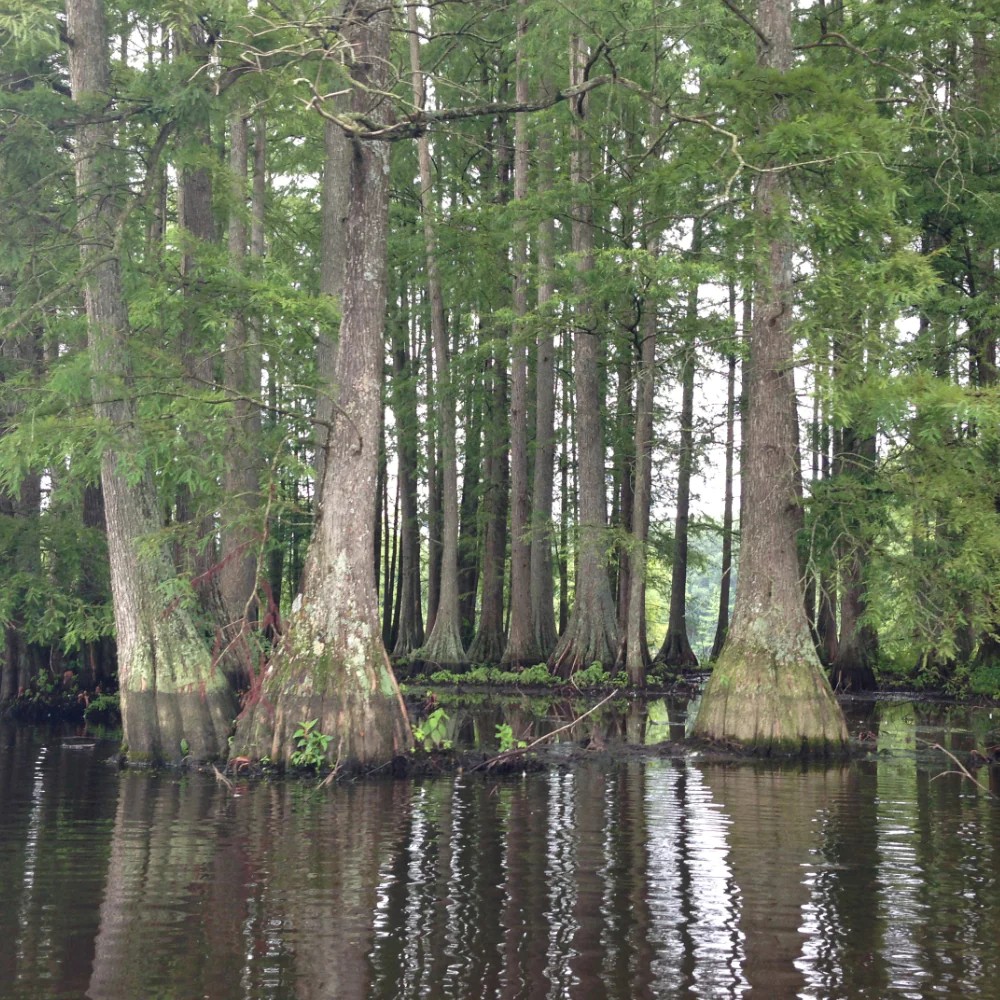Taxodium distichum (Bald Cypress), a stately and long-lived deciduous conifer, is a tree of remarkable beauty. Its upright, pyramidal shape complements many sceneries. Bald Cypress loses its needles every winter and produces a new set in the spring, unlike the majority of cone-bearing trees. In the fall, the delicate foliage of this tree transforms into rich hues of orange, cinnamon, and golden-brown before dropping to show the reddish-brown to silver exfoliating bark. Purplish-green, small, ovoid cones eventually become brown. When cultivated in soggy soils, the trunk of this tree, which is flared at the base, sprouts knobby growths called "knees." Some of its standout qualities include the rusty-red fall hue of its lacy needles and the intriguing winter silhouette. A magnificent tree for pond or stream margins.
| Plant Type |
Native, Trees |
| Hardiness Zone |
4-9 |
| Exposure |
Full Sun, Partial Shade |
| Season of Interest |
Spring, Summer, Fall, Winter |
| Height | 45' - 55' (ft), 55' - 75' (ft) |
| Spread | 15' - 25' (ft), 25' - 35' (ft) |
| Water Needs |
Average, High |
| Maintenance |
Low |
| Soil Type |
Clay, Loam, Sand |
| Soil PH |
Acid, Neutral |
| Soil Drainage |
Moist but Well-Drained, Poorly Drained |
| Characteristics |
Fruit & Berries, Showy |
| Tolerance |
Clay Soil, Deer, Wet Soil |
| Attracts |
Birds |
| Garden Uses |
Ponds and Streams, Rain Gardens |
Taxodium distichum (Bald Cypress) | Bald Cypress, Baldcypress, Common Bald Cypress, Southern Bald Cypress, Deciduous Cypress, Southern Cypress, Swamp Cypress, Red Cypress, White Cypress, Yellow Cypress, Gulf Cypress, Tidewater Red Cypress || Taxodium distichum (Bald Cypress), a stately and long-lived deciduous conifer, is a tree of remarkable beauty. Its upright, pyramidal shape complements many sceneries. Bald Cypress loses its needles every winter and produces a new set in the spring, unlike the majority of cone-bearing trees. In the fall, the delicate foliage of this tree transforms into rich hues of orange, cinnamon, and golden-brown before dropping to show the reddish-brown to silver exfoliating bark. Purplish-green, small, ovoid cones eventually become brown. When cultivated in soggy soils, the trunk of this tree, which is flared at the base, sprouts knobby growths called "knees." Some of its standout qualities include the rusty-red fall hue of its lacy needles and the intriguing winter silhouette. A magnificent tree for pond or stream margins.
Native,
Full Sun, Partial Shade,
Spring, Summer, Fall, Winter,
Average Water Needs, High Water Needs, Low Maintenance, Moist but Well-Drained, Poorly Drained,
Fruit & Berries, Showy,
Clay Soil Tolerant, Deer Tolerant, Wet Soil Tolerant,
Attracts Birds, Ponds and Streams, Rain Gardens


